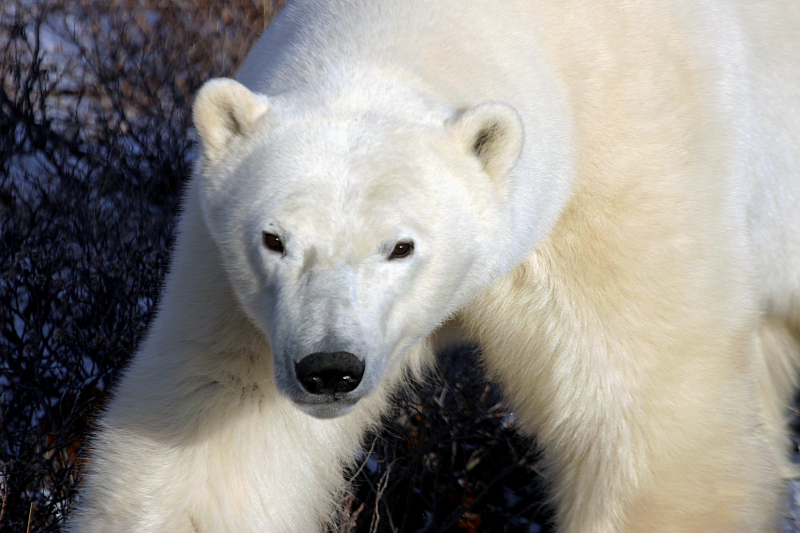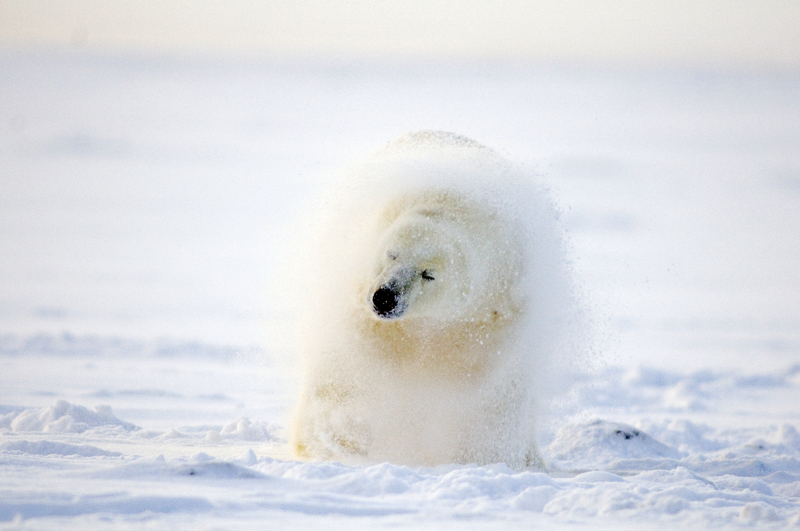Polar bear subpopulation declines as Arctic warms
Last week, I ate lunch with some polar bears. I was visiting Churchill, Manitoba, where almost a thousand polar bears gather each fall to await the return of the sea ice to Hudson Bay. Though I’m a long-time northern resident, I have only had a few polar bear encounters – so I was excited to fly (south, funnily enough) to visit the famous bears of Churchill. And seeing them up close was every bit as inspiring as I’d expected.
Most of the bears we saw were in reasonably good condition, having come through the summer with enough body fat to get them through their increasingly long fast. But in Churchill, at the southern edge of the polar bears’ range, the bears are certainly ‘feeling the heat’ of a warming Arctic, with declining sea ice reducing access to important prey.
40% decline in southern Beaufort Sea polar bears
And they’re not alone. As a new study released today shows, other polar bears at the edge of the range are facing challenges– in this case, the southern Beaufort Sea subpopulation experienced about a 25-50% decline in numbers between 2001 and 2010. The paper, “Polar bear population dynamics in the southern Beaufort Sea during a period of sea ice decline”, clearly associates the loss of sea ice with decreasing polar bear numbers.
While this is troubling news, it is not wholly unexpected. Experts anticipated that impacts of a warming Arctic on polar bears would be felt first at the edges of the range, like the southern Beaufort Sea and western Hudson Bay.
Investing in research
These hypotheses are exactly why WWF and others have invested in ongoing research on polar bears and sea ice in these regions – they’re the canaries in the coalmine, the bellwethers for the future of the Arctic. It’s critical that communities and regulators base decisions about development, harvesting and more on the most current and accurate information. That includes scientific, as well as local and traditional knowledge research, all of which can and should work together to paint a clear picture of the state of the polar bear populations in the region.
Taking action on climate change
One thing is already clear: climate change is altering the Arctic at a rate too rapid for polar bears to adapt. And the most important thing we can do is take action on climate change today. With new momentum among international leaders, we hope that we are on the path for meaningful climate action. The pressure is mounting, partly fueled by evidence of impacts in the Arctic. Now is the time to begin the shift away from fossil fuels to a more sustainable economy, for the future of the Arctic and the planet.
As someone who lives in the Arctic, I know well what climate change is putting at risk: a region rich in culture and traditions, the historic home of a remarkable group of people, some of the planet’s most compelling nature, and some of Canada’s most iconic species. All too important for us to take for granted.



